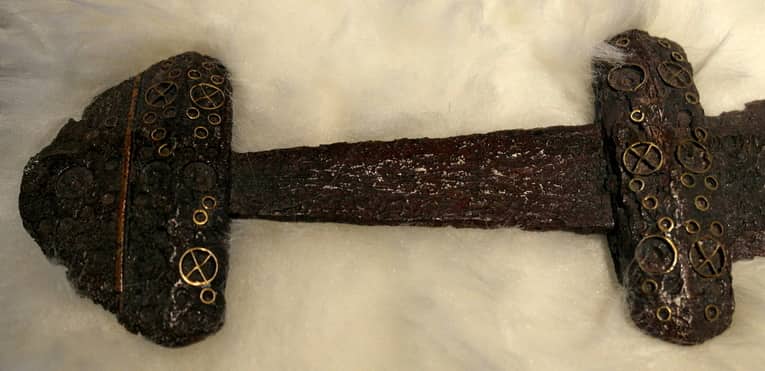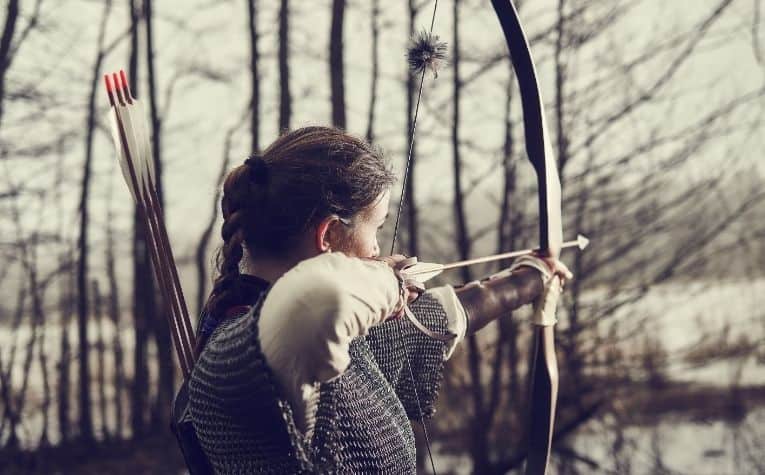The Vikings hailed from Scandinavia, and they’re known historically for their raids and their ventures into far-flung lands, from present-day Russia to Iceland.
Their mastery of sailing and navigation facilitated a constant exchange of culture with the lands they explored, as well as flourishing trade opportunities.
These variables were influential in many aspects, from the political to the social.
The Vikings did many fun activities in their free time between journeys to foreign lands and working on their farms.
From drinking competitions to board games and early versions of skating and skiing, Vikings knew how to entertain themselves even in eras of history that presented many difficulties.
The Vikings spent a lot of their lives in places with long winters, which influenced the things they did for fun.
There were designated indoor and outdoor activities, with the latter frequently dependent on the weather conditions.
Most of the entertainment pastimes involved a degree of friendly competition and the focus was often on group activities. Keep reading to learn more.
Can you own a piece of Viking history? See Can you buy genuine Viking artifacts today? to learn more.

What the Vikings Did for Fun
The Vikings did various activities for fun and knew how to take time for leisure rather than just for work. These are some of the entertainment categories:
- Outdoor activities: The Vikings loved being outside, even in severe weather conditions. Many of their games are set outdoors, like ball games, strength and endurance competitions, and winter sports.
- Indoor activities: While certain leisure activities could be played both outside and inside, some entertainment was carried out indoors, particularly at feasts. Drinking contests were a frequent occurrence, especially in teams of men and women. Board games were also popular, as were poetry competitions and music performances.
- Water-based activities: Despite the usually cold weather that the Vikings experienced, they were keen swimmers and were known to spend leisure time in the water, especially for bathing.
The Vikings played board, but what about chess? See Did the Vikings play chess? to learn more.
The Vikings Played Ball Games
According to the Icelandic family sagas, the Vikings were fond of ball games known collectively as knattleikr. [1]
Depending on the location and the time of year, these games were played on thick ice or spacious fields.
Details about the games are not recorded, but bats or sticks may have been involved, and there were usually two teams facing each other.
Viking ball games were social events and often drew a large crowd of onlookers.
The sagas suggest that women didn’t participate in these games, but there are instances of them being a part of the audience, usually from a distance.
These games’ rules remain unknown, but the Icelandic hero Egill Skallagrimsson was noted to be a fan of them in a chapter of Egil’s Saga.
This saga also indicates that these games could lead to conflict.
A lot of people wonder what the Vikings looked like. See Did the Vikings wear dreadlocks? to learn more.
They Showed Off Their Strength and Endurance

Vikings loved competing and participating in various strength and endurance tests.
They were known to be avid runners, and they held frequent wrestling contests.
Running contests indicate that speed and agility were also prized qualities among the Vikings, not just strength.
Wrestling competitions happened often, as they allowed the Vikings to train and show off their skills, particularly their flexibility and strength.
The Vikings did not want to depend on weapons, so they trained to fight with their bare hands.
Their preferred style of wrestling was Glima, and the loser of the match was the competitor first thrown to the ground. [2]
Vikings held archery competitions and sword-fighting, weightlifting, and stone-throwing contests.
Some of these events included horse-fighting segments that could turn brutal. [3]
There was also a game similar to tug-of-war called toga honk, in which two opponents faced each other.
They Had Water-Based Competitions
During this time in history, the Vikings were most fond of bathing and had many tools they used for personal hygiene, like early razors and tweezers. [4]
Regardless of weather conditions, they spent time swimming and fishing.
They had swimming contests and some of these could be intense, especially the one known as the ‘drowning’ contest. [5]
This event appears several times in the Laxdaela Saga, notably featuring competitions between King Sigurd the Crusader and King Eystein I, and also between Kjartan Olaffson and Olafur Trygvasson.
Holding an opponent underwater as long as possible was the contest’s aim and could predictably lead to accidental drowning.
The Vikings played winter sports
The Vikings adapted to their native Scandinavian lands’ frequently inclement weather and participated in early forms of skiing and skating.
These activities were done for leisure but also facilitated travel between snowed-in areas.
The blades of Viking skates were usually made from the bones of cows or horses.
Skiing became a part of Viking society and was even attributed to important figures in Norse mythology like the Jotun and the Æsir.
The minor god Ullr, son of Sif and stepson of Thor, was known as a god of archery, hunting, skating, and skiing. [6]
They Tested Their Strategy Skills
The Vikings enjoyed playing board games and dice games. These were a source of entertainment in their free time and a way to train their strategy skills.
One of their preferred board games was Hnefatafl, known as Viking chess. Hnefatafl was a logic and strategy game involving two opponents.
The rules remain unknown, but the game seems to have involved cornering the king piece. [7]
Board games enjoyed by the Vikings traveled with them and were introduced to other countries.
Hnefatafl remained the most popular board game until chess came to Scandinavia in medieval times.
Other board games played by the Vikings were nitavl and tretavl, versions of Nine Men’s Morris and Tic-Tac-Toe, respectively.
They Feasted and Had Drinking Contests
Feasts were essential parts of the Viking social life and drinking contests often took place during these gatherings. These contests were essentially designed to test the intellect, with teams facing off in a game of wit.
Separate teams of men and women would drink and then show off their oratory skills by creatively insulting opponents.
The game would be won by the person displaying the most eloquence in their insults once the drinking was done.
Drinking competitions were varied and could change depending on the event.
They Performed Music and Poetry
Once feasting was done, the Vikings could participate in dice games or drinking games, but this was also a time for music and poetry performances.
Songs and storytelling were important parts of Viking gatherings, with music prevalent at weddings, funerals, and feasts.
Storytelling was another chance to showcase the oratory skills of the speaker and usually involved poetry recitations.
The figure of the skald was often encountered in Viking society.
The skald was a storyteller and a poet and instrumental in preserving stories from one generation to the next as he memorized fragments of sagas and the deeds of heroes.
Their Children Played with Toys
Archaeological evidence suggests that the Vikings carved toys and dolls for their children from wood.
Horses were prevalent among Viking children, as were toys mimicking the shape of weapons in smaller sizes.
Other Viking-era toys that were found were ships and spinning tops. [8] The children also received smaller versions of household items, like lamps.
Children participated in group games that were versions of the ones adults played, particularly ball games.
Games and toys for Viking children served the double purpose of being for entertainment and learning, and even as precursors to strength and weapons training.
Conclusion
Despite being known primarily for raids and frequent voyages, the Vikings engaged in various activities just for fun. These activities took many shapes.
References:
[1] Health and Fitness History
[2] Skjalden.com
[3] History on the Net
[4] History.com
[5] History Collection
[6] Norse Mythology
[7] History on the Net
[8] Shetland and Museum Archives
